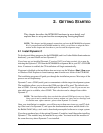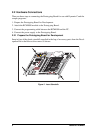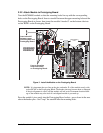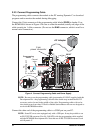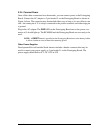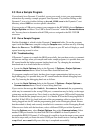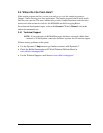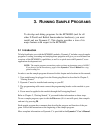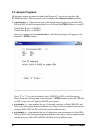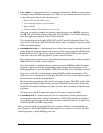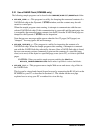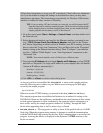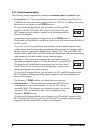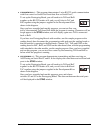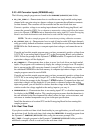
User’s Manual 15
3. RUNNING SAMPLE PROGRAMS
To develop and debug programs for the RCM4000 (and for all
other Z-World and Rabbit Semiconductor hardware), you must
install and use Dynamic C. This chapter provides a tour of its
major features with respect to the RCM4000.
3.1 Introduction
To help familiarize you with the RCM4000 modules, Dynamic C includes several sample
programs. Loading, executing and studying these programs will give you a solid hands-on
overview of the RCM4000’s capabilities, as well as a quick start with Dynamic C as an
application development tool.
NOTE:
The sample programs assume that you have at least an elementary grasp of ANSI C.
If you do not, see the introductory pages of the Dynamic C User’s Manual for a sug-
gested reading list.
In order to run the sample programs discussed in this chapter and elsewhere in this manual,
1. Your module must be plugged in to the Prototyping Board as described in Chapter 2,
“Getting Started.”
2. Dynamic C must be installed and running on your PC.
3. The programming cable must connect the programming header on the module to your
PC.
4. Power must be applied to the module through the Prototyping Board.
Refer to Chapter 2, “Getting Started,” if you need further information on these steps.
To run a sample program, open it with the File menu (if it is not still open), then compile
and run it by pressing F9.
Each sample program has comments that describe the purpose and function of the pro-
gram. Follow the instructions at the beginning of the sample program.
More complete information on Dynamic C is provided in the Dynamic C User’s Manual.



